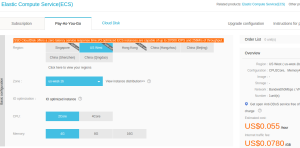Somewhat dated (2011), but an interesting read.
A Measurement Study of Server Utilization in Public Clouds, Huan Liu, in Proc. Int. Conf. on Cloud and Green Computing (CGC), Sydney, Australia, Dec. 2011
...an extensive study of server CPU utilization across two different public cloud providers. To measure a cloud physical server’s utilization, we launch a small probing Virtual Machine (VM) (often the smallest VM offered) in a cloud provider, and then from within the VM, we monitor the CPU utilization of the underlying hardware machine. Since a cloud is built around multi-tenancy, there are several other VMs running on the same physical hardware. By measuring the underlying hardware’s CPU utilization, we measure the collective CPU utilization of other VMs sitting on the same hardware

